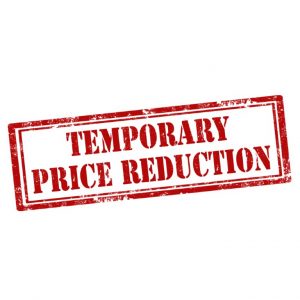 Customers see any reduction in price as PERMANENT! Watch out!
Customers see any reduction in price as PERMANENT! Watch out!
Every CPG producer must occasionally show the end user-customer a price reduction on the shelf at the retail store. But in order to do that, the producer must somehow temporarily reduce their wholesale price to the distributer and get the distributer to reduce their price to the retailer and get the retailer to reduce their price to the customer. If selling direct to the retailer, the produce must get the retailer to cooperate by reducing their price to the customer.
Temporary Price Reductions
Temporary Price Reductions (TPRs) are a great way of drawing attention to your products, negotiating for floor displays, or just getting that customer who has passed on bringing in your product many times to finally try it out. Going out with a new CPG product at retail with a reduce price right off the bat would be a disaster. Why? Because the customer would see the change (back) to everyday pricing as a price increase and be discouraged to make future buys. So, it’s critical that before you employ the TPR programming tactic, you have already established your everyday pricing for a month or more in that store.
Sure, you must have some kind of temporary price reductions on a periodic basis to draw attention to your products, but problems can arise in the way you do it. The matter becomes complicated if you are trying to affect a reduction in retail shelf price. For instance, if you lower your FOB (warehouse) price to achieve a retail price reduction, the distributor and the retail will complain when your price goes back to normal. They will see it as an increase!
Protect Your Price
So how do you provide a TPR without tampering with your everyday price? Answer: Never lower your price! Always charge full price on your invoice. Then, offer a one-time credit, good for a limited time under specific circumstances. When you invoice, invoice for the full price and show the credit if applicable. In other words, you are giving them a credit under very specific circumstances that could be based on time, volume, or other performance, or a combination of these factors. For instance, you may offer a program to a distributor or a retailer for their purchases during a given month on the condition that they participate by reducing their margins during that month to achieve $1 or $2 less on the shelf. You may also make it contingent upon them buying a certain amount at a time like say, a 5-case minimum order of your products. That will encourage a floor stack display.
Protect Your Sales
When you sell this program, be sure to have seasonally-themed promotional materials already produced well in advance to show retailers how you will support the floor displays of your products. Make sure they understand that the credit is only available on purchases made under your program. Be careful not to present your program too soon before the promotional event or the retailer will wait to buy and you may lose sales in the month preceding the event. It gets very tricky when you rely on the distributor’s representative to make the presentation. We recommend that you or your salespeople do the presentations and get the buy in on the program from the retailer.
If you sell direct to the retailer, the credit will be seen as a one-time credit for a limited period under certain circumstances. But if you offer the credit to the distributer, the retailer may see it as a permanent price reduction unless you control the communication and get your distributer to make the TPR conditions clear to the retailer. You don’t want to hear, “I paid less last month, and now you are raising your price!” It’s not easy giving away money!
